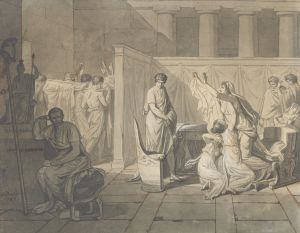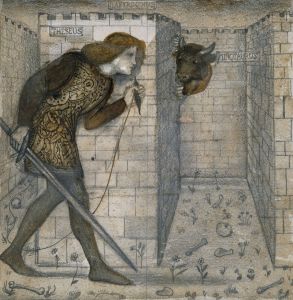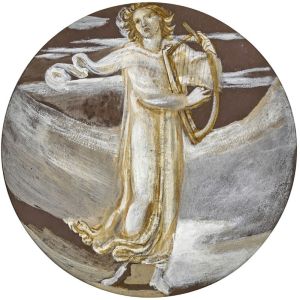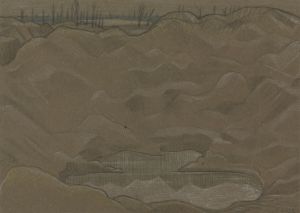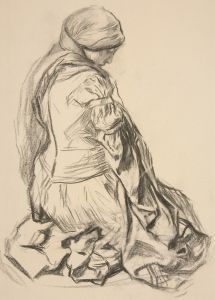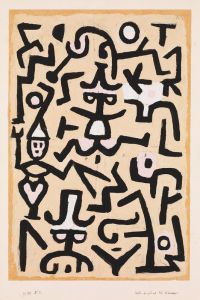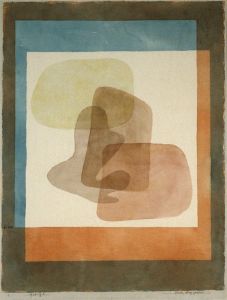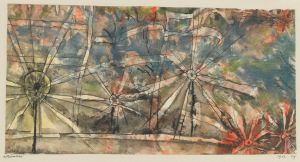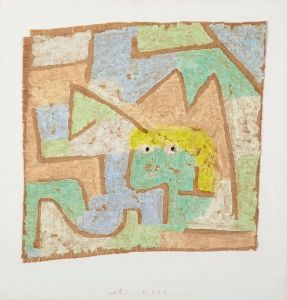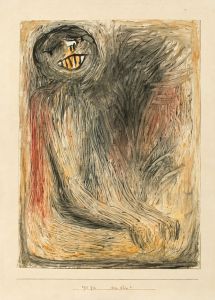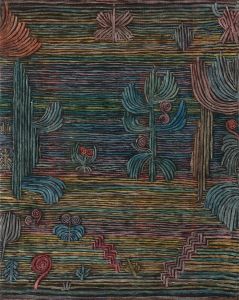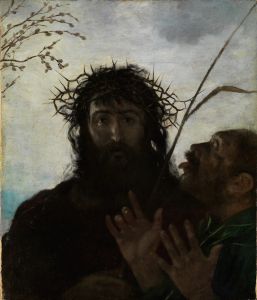
Legende – Gedenkblatt mit d. heil Stier
A hand-painted replica of Paul Klee’s masterpiece Legende – Gedenkblatt mit d. heil Stier, meticulously crafted by professional artists to capture the true essence of the original. Each piece is created with museum-quality canvas and rare mineral pigments, carefully painted by experienced artists with delicate brushstrokes and rich, layered colors to perfectly recreate the texture of the original artwork. Unlike machine-printed reproductions, this hand-painted version brings the painting to life, infused with the artist’s emotions and skill in every stroke. Whether for personal collection or home decoration, it instantly elevates the artistic atmosphere of any space.
Paul Klee's Legende – Gedenkblatt mit d. heil Stier (translated as Legend – Memorial Sheet with the Holy Bull) is a work created by the Swiss-German artist Paul Klee, who is widely regarded as one of the most influential figures in modern art. Klee's career spanned various artistic movements, including Expressionism, Cubism, and Surrealism, and his works are known for their imaginative compositions, use of symbols, and exploration of color and form.
Legende – Gedenkblatt mit d. heil Stier was completed in 1919, a period during which Klee was experimenting with a variety of techniques and themes. This was shortly after World War I, a time when Klee's art began to reflect more introspective and symbolic qualities. The title of the work suggests a narrative or mythological dimension, as "Legende" refers to a legend or story, while "Gedenkblatt" translates to "memorial sheet." The reference to the "holy bull" indicates a possible connection to ancient or spiritual symbolism, which was a recurring theme in Klee's oeuvre.
The artwork itself is executed in Klee's characteristic style, combining abstract and figurative elements. It features a composition that integrates geometric shapes, lines, and symbols, creating a sense of both structure and spontaneity. Klee often used such techniques to evoke a sense of mystery and to invite viewers to interpret the work on multiple levels. The "holy bull" in the title may allude to religious or cultural motifs, but Klee's approach to such themes was typically personal and open to interpretation.
This piece was created during Klee's time in Germany, where he was associated with the Bauhaus school of art and design. Although he did not formally join the Bauhaus until 1921, the years leading up to his tenure there were marked by significant experimentation and the development of his unique artistic language. Klee's works from this period often reflect his interest in mythology, spirituality, and the interplay between the natural and the abstract.
As with many of Klee's works, Legende – Gedenkblatt mit d. heil Stier is housed in a private collection or museum, though specific details about its current location or provenance are not widely documented. The piece is representative of Klee's ability to blend narrative, symbolism, and abstraction, making it a notable example of his early post-war output.
Further details about the specific inspiration or context for this work are not extensively documented, as Klee often left his pieces open to interpretation without providing explicit explanations.





